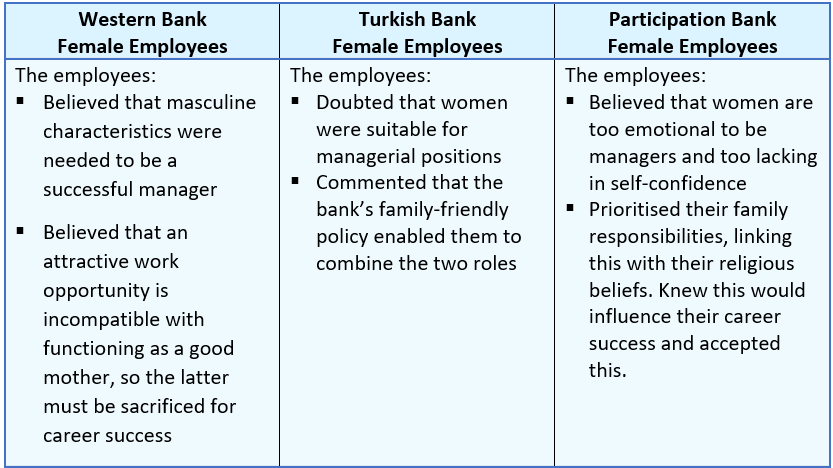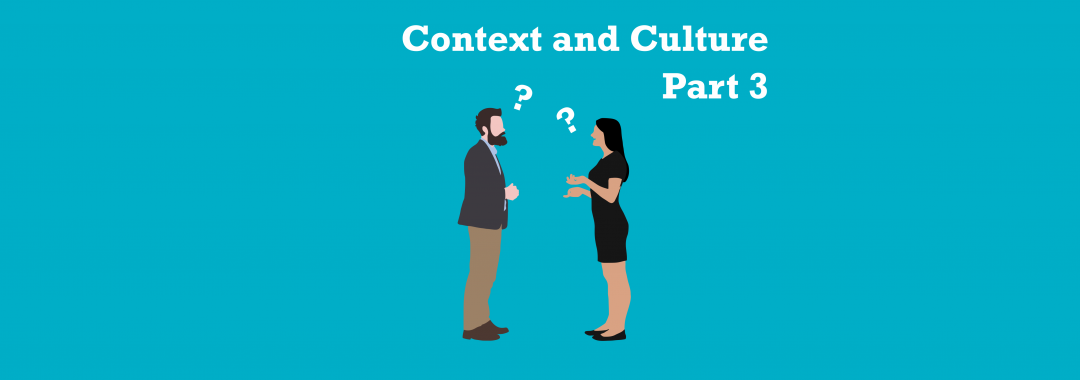
This post is the third of a three part series on Context and Culture
Part 3: The multiple levels of context
In Part 1 and Part 2 of this GPC Insights series on Context and Culture, we focused on the interactional context – the setting that a communication event takes place in. We considered the key elements of the interactional context and suggested that a communicative activity framework offers a useful way of considering the impact that culture can have at this level.
The nested layers of context
In fact, the interactional context is just one layer of context – the most local. As shown in the diagram below, there are actually multiple layers of context, each nested within the other layers.

Here I briefly explain the other three levels of context and then use a published case study to show how interconnected the levels are.
The organisational context
All interactional contexts are set within a broader context – often an institutional or organisational context. For example, business meetings are associated with one or more specific organisations, sales encounters are likewise linked with a particular company, and seminars/workshops are typically associated with a particular educational institution. Such organisations tend to have their own practices and values (i.e. cultural patterns) which can have an impact on the individuals who are communicating with each other.
In our book, Global Fitness for Global People: How to manage and leverage cultural diversity at work, we devote four chapters to the organisational context. Many intercultural books focus on people’s intercultural competence, and how to develop it, which is very important of course. However, the impact of the organisational environment is often overlooked, yet can have a major influence in numerous ways.
- If you’d like to learn more about this, ask us about a guest talk or masterclass session. Just email GPC or Helen directly.
- To read more about optimising the organisational context so that it provides a high quality environment for Global Fitness professional development, see our 2022 book Global Fitness for Global People: How to manage and leverage cultural diversity at work.
The societal context
Organisations themselves are set within a societal environment, with principles, procedures, and regulations that the organisations are expected or required to follow. For instance, universities are subject to the quality assurance requirements of the national higher education sector to which they belong, and companies selling goods are subject to any national regulations on descriptions of goods and marketing standards.
Much intercultural work focuses almost exclusively on this level. Traditionally it has been interpreted primarily in terms of values, but more recently a broader perspective has emerged.
- If you’d like to learn more about this, ask us about a guest talk or masterclass session. Just email GPC or Helen directly.
- To read more about optimising the organisational context so that it provides a high quality environment for Global Fitness professional development, see our 2022 book Global Fitness for Global People: How to manage and leverage cultural diversity at work.
The world context
Societies themselves are set within regional and world contexts that can affect their operation. For instance, marketing standards may apply across a region (such as the European Union), and world events (such as the rise in oil and gas prices) can affect numerous societies and impact on their policy decisions, which in turn affect organisations.
This level of context is rarely discussed but is important for debates about globalisation. For a brief discussion of this, see the last chapter of our book Global Fitness for Global People: How to manage and leverage cultural diversity at work.
How do the levels of context interact with each other?
All of the levels of context have a simultaneous, dynamic, and interactive effect on the way that the impact of culture manifests itself. A recent study by Taser-Erdogan[2] illustrates this beautifully. She investigated the career experiences of senior women in three different banks in Turkey:
- A Western private bank that had been operating in Turkey for more than 10 years.
- A large privately owned Turkish bank.
- A ‘participation bank’ which in effect is primarily an Islamic bank.
She points out that at the Turkish societal level of context, there is a mixture of secular, patriarchal and religious norms, with the role of women traditionally seen mainly as wives and mothers. However, at the organizational level, there were differences across the three banks in the impact of culture on the female managers’ career prospects. The table below summarises her findings – i.e. the experiences reported by her interviewees.

As can be seen from the table above, the exact ways in which women’s career prospects were affected by cultural factors varied across the three banks. In other words, the organizational context influenced how women’s career progression opportunities were experienced.
The organizational context in turn interacted with the beliefs and preferences of the individuals working in each of these settings. The next table illustrates this.

We can see clearly from this study how closely interconnected the multiple levels of context are and how they interact to influence behaviour.
For more information, refer to the article or get in touch with us.
Points to reflect on
Consider a workplace issue (e.g. achieving promotion, meeting sales targets) that is relevant to you:
- What are your own personal desires/goals in relation to it?
- How does your organisation’s procedures/practices support or hinder you in achieving them?
- How do procedures/regulations/attitudes in society more broadly support or hinder you in achieving them?
What interconnections can you perceive between these different layers of context?
- If you’d like to reflect more on the different layers of Context and the impact of culture on them, ask us about a coaching session, a guest talk, or a masterclass session. Just email GPC or Helen directly.
- To learn more about handling cultural diversity at work more successfully and to access a wide range of case studies, activities and tools, see our 2022 book Global Fitness for Global People: How to manage and leverage cultural diversity at work.
Professor Helen Spencer-Oatey
References
[1] Based on the diagram in our 2022 book Global Fitness for Global People: How to manage and leverage cultural diversity at work.
[2] Taser-Erdogan, D. (2022). Careers advancement of women: Applying a multi-level relational perspective in the context of Turkish banking organisations. Human Relations, 75(6), 1053–1083.

